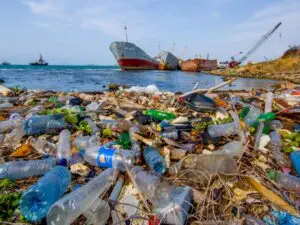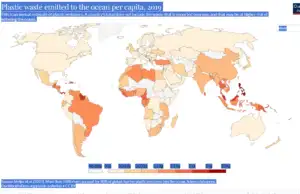Superb report on Global plastics
Go to https://ourworldindata.org/plastic-pollution
Our world in the data has just released a compendium of key metrics on plastic globally. It also identifies the sources of plastics per capita production and distribution of plastics and the key areas plastics affect our planet. It is clear that vast quantities of plastics are being produced with an increasing rapidity and that in many countries particularly in the developing world they are being throw on into the sea and on the land. The very least developed countries are less to blame have plastics or even the use of them as wrappings. A few of the more advanced countries have plastic waste under control and it is either burned put in landfills or Largely out of the water courses it is the middle developed countries which have the largest impact per capita on their coasts and oceans as well as on land. Countries in Southeast Asia and in West Africa essentially throw the plastics wherever they land and most often they end up in the rivers and in the sea. This thorough report has an immense formation on the actual types of sources and destinations of plastics.


Efforts to control the use of plastics have been successful in some jurisdictions and one of the first – the Nilgiri Hills of India will ban the use of plastics virtually completely. In Europe and North America while there is some contribution to global plastics and indeed the source of many of them being produced, most waste is directed to landfills or other means of waste management. While efforts have received some popularity in reducing the personal use of plastics for drinking straws utensils and caps etc. these are very small relative to the immense creation and distribution of waste plastics globally. Every morning on tourist beaches in countries like Seneca Sri Lanka or Brazil trucks arse sent out to gather the waste on the beach to make sure that those using it are not encumbered with waste plastic. A few miles along the beach there is no such control. A study done in Southeast Asia a few years ago showed that a form of ” recycling” was taking place as every night waste was collected from the tourist beaches and put onto a truck or which took that upstream and poured them into a river less than 3 km upstream from where it returned within the next few hours back onto the beach. Readers are encouraged to look at this entire report, to see where their own nation region or communities lie in terms of what they are doing and to find new ways to reduce the plastic footprint of their people.

Leave a Reply